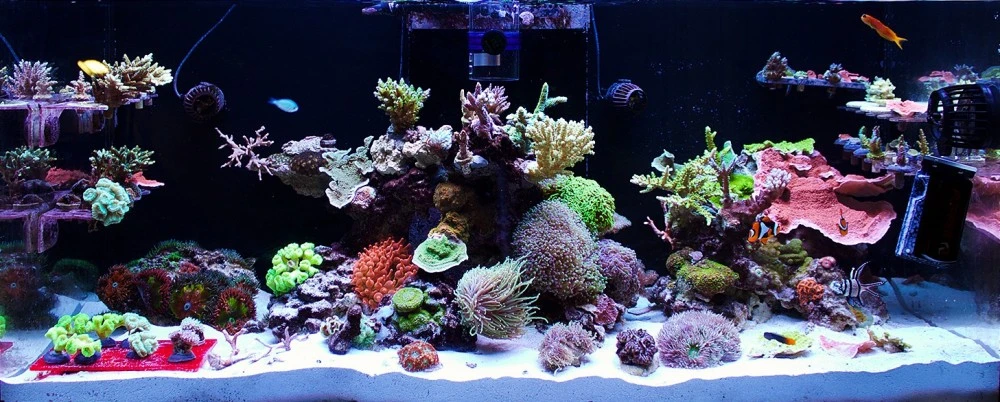Stunning 73-Gallon Reef Tank – HarryPotter's TOTM | NanoReef

Tank Specifications
Volume: 73 Gallons / 276 Liters
Dimensions (L × W × H):
47.0" ×
20.0" ×
21.0"
119.4cm ×
50.8cm ×
53.3cm
Equipment List
- Salt: Red Sea
Frequently Asked Questions
How often should I perform water changes in a reef tank?
In a reef tank, it's recommended to do water changes every 1-2 weeks. In HarryPotter's experience, he does a 20-gallon water change every two weeks, using Red Sea Coral Pro salt. This helps maintain water quality and stabilizes parameters.
What is the best way to prepare for a water change in a reef tank?
To prepare for a water change, fill a container with RO/DI water and dissolve the appropriate amount of salt (HarryPotter uses 6 lbs for a 20-gallon change). Mix thoroughly and check the salinity to ensure it matches your tank's parameters before adding it back.
What maintenance tasks should I perform during water changes?
During water changes, it's important to check the salinity of your tank post-change. Additionally, remove any dead snails, dust off corals, and rearrange corals if needed. Regularly monitor tank health for any issues.
What should I feed fish and corals in a reef tank?
For feeding, a simple approach is effective. HarryPotter feeds his tank Mysis and Reef Roids, which are great for both fish and coral health. It's important to ensure the food chosen promotes good polyp extension and overall well-being.
How often should I feed my reef tank inhabitants?
Feeding can be done several times a week, but daily feeding is also common for certain tanks. HarryPotter feeds using Mysis and Reef Roids, which helps maintain a balanced diet and supports coral health.
How often should I test the water parameters in a reef tank?
While regular testing is ideal, HarryPotter tests mostly when he suspects an issue based on coral health. He emphasizes observing the tank closely and using larger water changes to stabilize the environment rather than testing constantly.
What parameters should be monitored in a reef tank?
Key parameters include salinity, calcium, alkalinity, magnesium, and phosphate levels. Observing coral health and polyp extension can also indicate if there's an underlying issue.
What type of lighting is best for a reef tank?
HarryPotter prefers T5 lighting for his reef tank setup, particularly the ATI SunPower fixture. While LED fixtures can promote growth, T5 lights provide better color spread and more consistent results.
Do I need a protein skimmer in my reef tank?
While not strictly necessary, a protein skimmer can help reduce nutrients and decrease the need for water changes. It allows for increased feeding, which benefits the overall health of fish and corals.
What are the dosing requirements for a SPS-dominated reef tank?
In an SPS-dominated tank, dosing calcium and alkalinity regularly is crucial for growth. HarryPotter doses 36 ml of calcium and alkalinity daily on alternating hours to maintain stable parameters.
How do I maintain nutrient levels in my reef tank?
Maintaining nutrient levels can be achieved through careful feeding and regular water changes. Observing tank inhabitants for signs of nutrient deficiency or abundance is also important.